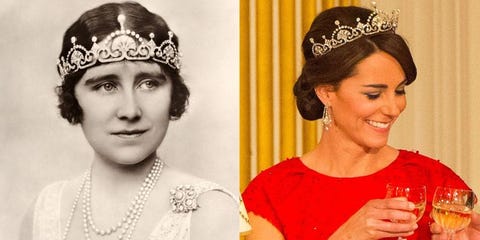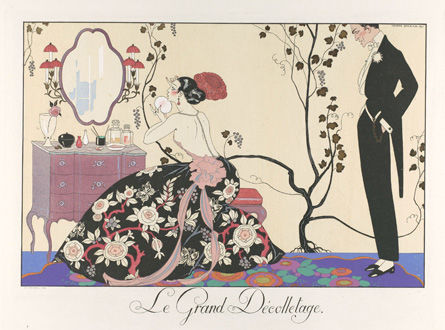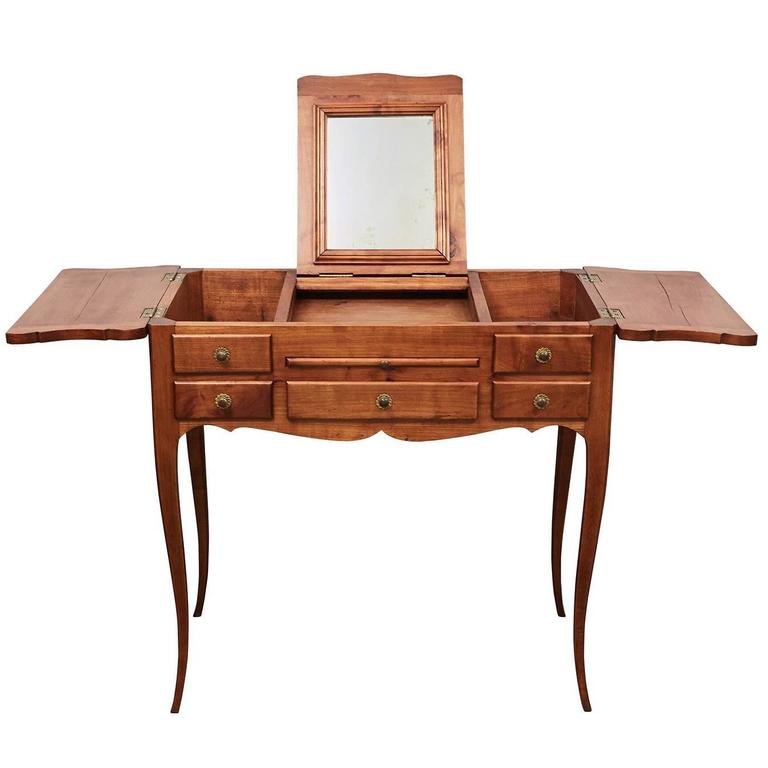talkingfashion » fashion and fur
-
Calling All Columbus Readers!
Calling All Columbus Readers!
By Paige McKirahan
If you have found yourself in Ohio for the holidays, you may be left wondering how to spend your last week of the year in the Buckeye State. As one of the nation’s top three fashion capitals, Columbus has seemingly crept to the top of this elite list while no one was watching. According to Columbus Monthly, Columbus employs more fashion designers than ANY other city in the United States outside of New York City and Los Angeles. Our state’s capital is chock full of small boutiques working alongside huge fashion giants like Victoria’s Secret, Lane Bryant, Express, Abercrombie & Fitch, and previously Henri Bendel. Other popular, locally-grown shops like Homage are also gaining great visibility and contributing to the area’s reputation as a vibrant, evolving capital. We hope all of our Columbus fans bought some local goods for all of those on your list this season, because we sure do love being a part of this amazing network of fashion innovators!

Now that Holiday shopping days are over, though, what else does this amazing city have to offer? Does the cold weather and the holidays have you or your family feeling a little stir crazy this Christmas season? Well, grab you jackets and get ready for a full day of fun at Columbus’ greatest attractions on December 29th for FREE!

Thanks to The Columbus Foundation, local residents can spend their Saturday exploring central Ohio via free COTA rides all day long. The Wexner Center for the Arts, Ohio History Connection, Franklin Park Conservatory, and COSI are all participating in the free general admission event. The Columbus Museum of Art is also partaking in the winter fun; our CEO and one of our favorite designers, Charles Kleibacker, have both held positions at that venue. Be sure to check out all of the beautiful art they have to offer!
Whatever you spend the rest of your 2018 doing, we here at TalkingFashion want to wish all of our readers a Happy New Year and a FABULOUS New Years Eve! When picking out that perfect outfit for your night on the town, don’t forget to end 2018 wearing what YOU love and continue doing so for all of 2019!
Sources:
We're Number Three: Columbus' flourishing fashion industry. (2016, March 30). Retrieved from http://www.columbusmonthly.com/lifestyle/20160323/were-number-three-columbus-flourishing-fashion-industry
Staff, N. (2018, December 13). Columbus Foundation celebrates 75th anniversary with free COTA rides, other freebies. Retrieved from https://www.nbc4i.com/news/local-news/columbus-foundation-celebrates-75th-anniversary-with-free-cota-rides-other-freebies/1657569111
-
Headpiece Heaven: Five Fabulous Ornamental Accessories
Headpiece Heaven: Five Fabulous Ornamental Accessories
By Paige McKirahan
When it comes to the evaluation of headwear as an accessory rather than something worn out of necessity, it can truly make or break an outfit. Adding a scarf or hat to compliment a piece is customary, but what about more lavish head ornaments that are typically sported by royalty or those strutting the red carpet? Read on to learn about hair and head ornaments that emulate opulence from the top down!
This eclectic headwear is a more decorative alternative to the hat. Its roots can be traced back the Renaissance where it was customary for Christian women in Europe to sport head coverings. The use of the term came into circulation to describe the evolutionary form of this headpiece towards the end of the 20th century. Presently, it is typically worn at events where hats are customary and is accompanied by formal attire. They are commonly worn by woman as a covering during church services, weddings, or horse racing events. They are seen in great volume at royal events and Princess Beatrice of York wore a piece to Prince William and Catherine Middleton’s wedding that was so unusual, it became an internet sensation!
Tiara:
A tiara is a specific type of crown that tends to be bejeweled and ornamental in style. Appropriate for formal occasions of the white tie variety, this headpiece originates in Persia as a status symbol. The use of tiaras in ancient times declined with the rise of Christianity, but they saw a revival in the 18th century when Neoclassicism popularized the accessory for female adornment. Despite the fact that this revival was geared toward royalty, this piece has also been worn by wealthy commoners. The style is popular in the costume jewelry industry where they are worn by women for special occasions including homecomings, proms, quinceaneras, pageants, or weddings.

(image credits to harpersbazaar.com)
Hairpin:
The hairpin can come in many forms, but its basic function remains the same: to hold one’s hair in place. Whether the piece is elaborate and ornamental or utilitarian like a bobby pin, they are essential in creating different hairstyles. Coming from ancient Egypt and China, they were worn by all genders and were essential to hairstyling. They can also be used to note one's social or marital status. Now, they have a more decorative appearance and can be in the form of a barrette, bobby pin, or classic long straight pin.

(image credits to pinterest.com)
This hair accessory can be considered a variation of the hairpin; it is decorative and functional, with its main purpose being to hold a hat to the head. It was invented in Britain in the early 1800s and after its conception, the demand grew so great that a machine was created so it could be mass produced. In the late 1800s, bonnets became widely more circulated than hats, forcing hairpins into the closets of millions. They continued growing in popularity until the early 1900s until women began using them for self-defense purposes. They then began being regulated and their length decreased in order to deter wearers from using them as weapons.
Crown:
As the most traditional of headpieces on this list, the crown is a symbolic headwear typically won by royals. They represent power, victory, honor, glory, and legitimacy, and are often emblematic of the monarchy. These pieces can feature natural motifs, and they often are adorned with an assortment of expensive jewels. There are a variety of crown types and they can be used in coronations, at state occasions, or during weddings. You can even find their style being copied for novelty events (think Burger King's kid crowns!)

(image credit to us.hellomagazine.com)
Has Megan Markel and Harry's wedding got you feeling headpiece crazed? We can sate your desire for this royal glamour from the top down! Take a look at our collection to find headpieces for every occasion!
-
Dazzling Dressing Tables: A Brief History of the Vanity
Dazzling Dressing Tables: A Brief History of the Vanity
By Paige McKirahan
Though the world of luxury furniture is very much alive and well, the type of pieces we see popularized now are worlds away from the specially crafted styles that previously dominated the market. If you are someone with cosmetics, accessories, or perfumes, it is likely that you have some sort of container to hold them all (or so we hope!). But, we ask, have you ever stored them in an ever-so-glamorous vanity?
The dressing table is one piece of furniture that reveals a great deal about the culture in its time; few other items tell us more about leisure pursuits, trends, and changing social customs than this. This is an ever evolving piece and it has held a variety of names including the dressing table, dressing stand, vanity, and toilet table. But, we wonder, where did this fashionable furniture come from and how did it achieve the elegant status is possesses today?

(photo credits to the metmuseum.com)
Of course, the vanity comes from humble beginnings in ancient culture; its earliest ancestor is considered to be ornate boxes that were crafted for holding beauty products in Egypt and Greece. The use of boxes for this storage purpose continued for centuries until the 1600s in Europe, where the early vanity began evolving. The original name of the piece was the toilet table and they were used in the bathroom for hygiene purposes with a wash basin for freshening up. High society in this century and into the next began wanting more delicate designs; they started commissioning specialized furniture pieces that were modeled after shaving tables, poudreuses, and the low boy. Poudreuses hailed from France; they boasted a small tabletop for holding perfume, along with a small amount of drawer storage for makeup. Low boys were more so popular in the U.S. and England and were often custom made. In addition to their decorative elements, they typically offered one or two rows of drawers for storage purposes.


Poudreuse (top) and Low boy vanity styles
(photo credits to pinterest.com)
As we headed towards the 19th century, these tables started to become larger with more decorative features. They now included mirrors and an increased number of drawers, making them a more cabinet-style. With their newfound function, they began being included in bedroom furniture collections and were commonly accompanied by a small stool. The variety of styles offered also increased in this century; colonial, Queen Anne, and Chippendale style vanities were elaborate and were often made of oak, walnuts, or mahogany. We saw huge art movement influence on these tables and many revivalist styles including Gothic, Elizabethan, Rococo, and Renaissance.
19th Century Rococo Vanity
(photo credits to inessa.com)
The early 20th century brought the Art Deco movement alive; this artistic style is synonymous with the 1900s rise of the vanity as luxurious dressing tables became the epitome of prestige. Old Hollywood films of the ‘20s and ‘30s painted a picture of a femme fatale sitting in her Manhattan apartment decorated with an elegant vanity table. Since then, vanity table's luxurious standing still prevails with influencers and couture queens alike creating entire rooms surrounding their vanity space. Do you have a vanity you are looking to fill! Well say goodbye to those empty drawers and hello to our collection for a solution any accessory lover would adore!
-
Designer Spotlight: Angela Caputi
Designer Spotlight: Angela Caputi
By Paige Mckirahan

(photo credits to advancingwomenartists.com)
This week, we figured that it would only be appropriate to spotlight one of our favorite Florentine designers, Angela Caputi, as she is a lover of the cross motif. Working out of a small shop in the historical "Palazzetto Mediceo", this bijoux aficionado has been creating pieces reminiscent of 1940s American Hollywood since 1975. Her brand quickly became popularized in the world of couture costume jewelry, catching the eyes of consumers, museums, and high fashion stylists alike. These pieces of art are heavily researched and always evolving; her signature style involves pieces that are created using simple materials with a variety of curated colors and shapes. In her domination of the global market, her creations have seen many movie sets and high fashion shoots since the brand's conception. Interested in owning one of her awe-inspiring bijoux artworks, click here to see what we have to offer! For more on her story, we invite you to visit her website.
Sources:
Angela Caputi: History. (2015). Retrieved from http://www.angelacaputi.com/en/history/
-
Gift Giving 101: The History of the Custom and How to Be a Good Guest
Gift Giving 101: The History of the Custom and How to Be a Good Guest
By Paige McKirahan
‘Tis the season for giving; whether you are the giver or the receiver, there is no denying that this custom is synonymous with the Christmas season. It is hard not to wonder, though, where and when this tradition began. As most traditions and customs do, this one originates in ancient Rome and is a relic of the winter solstice in December. This was celebrated in Rome with gift-giving and continued on as Christianity became more widespread. The date of Christmas was decided sometime in 330 AD and was claimed to be associated with the birth of Jesus; after this milestone, the custom was associated with the story of the Magi presenting gifts to baby Jesus. Along with that, some legends also base this idea of gift giving on Saint Nicholas, a fourth century Greek Bishop more affectionately known as Santa Claus. Presently, it is estimated that there is over $5 billion spent each day during the shopping season alone as the holiday has become somewhat commercialized.

(photo credits to clickorlando.com)
We feel that gift giving can still be personal, and love the idea of hostess gifts. This branch on the gift giving tree is a huge part of etiquette and they are appropriate for casual dinner parties, formal dinner parties, holiday events, weekend visits and housewarming events. These gifts typically are something for the home or in the instance that the event involves a meal, they tend to lean towards wine or desserts. In some countries, this is gift is obligatory and considered a second nature when visiting someone’s home.
If you’re heading to a holiday party over the next month and are scrambling for that perfect gift for your favorite hostess, TalkingFashion has you covered! From salt and pepper shakers to vintage table lighters, we have something for everyone! Head over to our décor collections and you’re sure to be the talk of the party when you walk in with one of our little white boxes!






